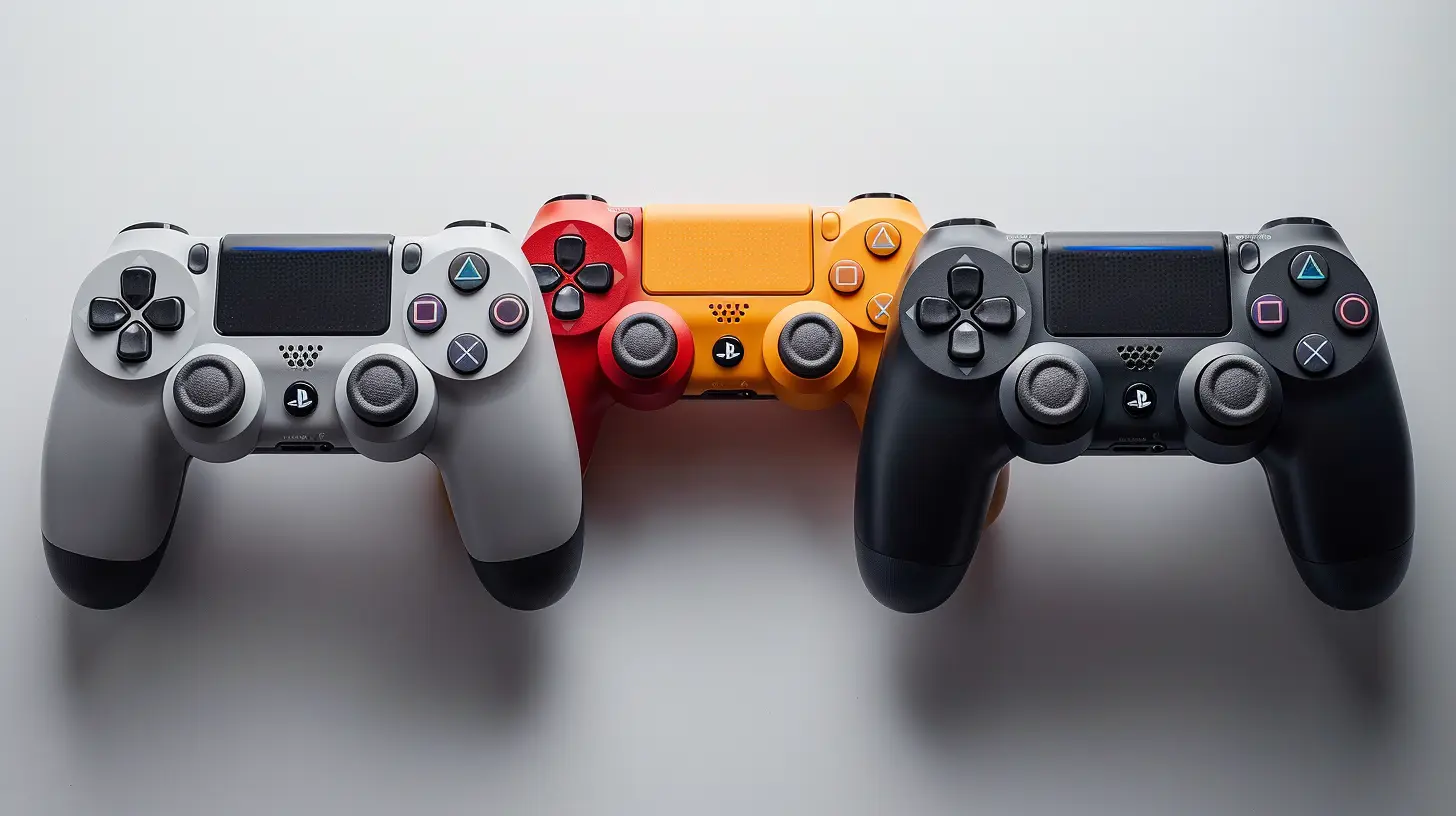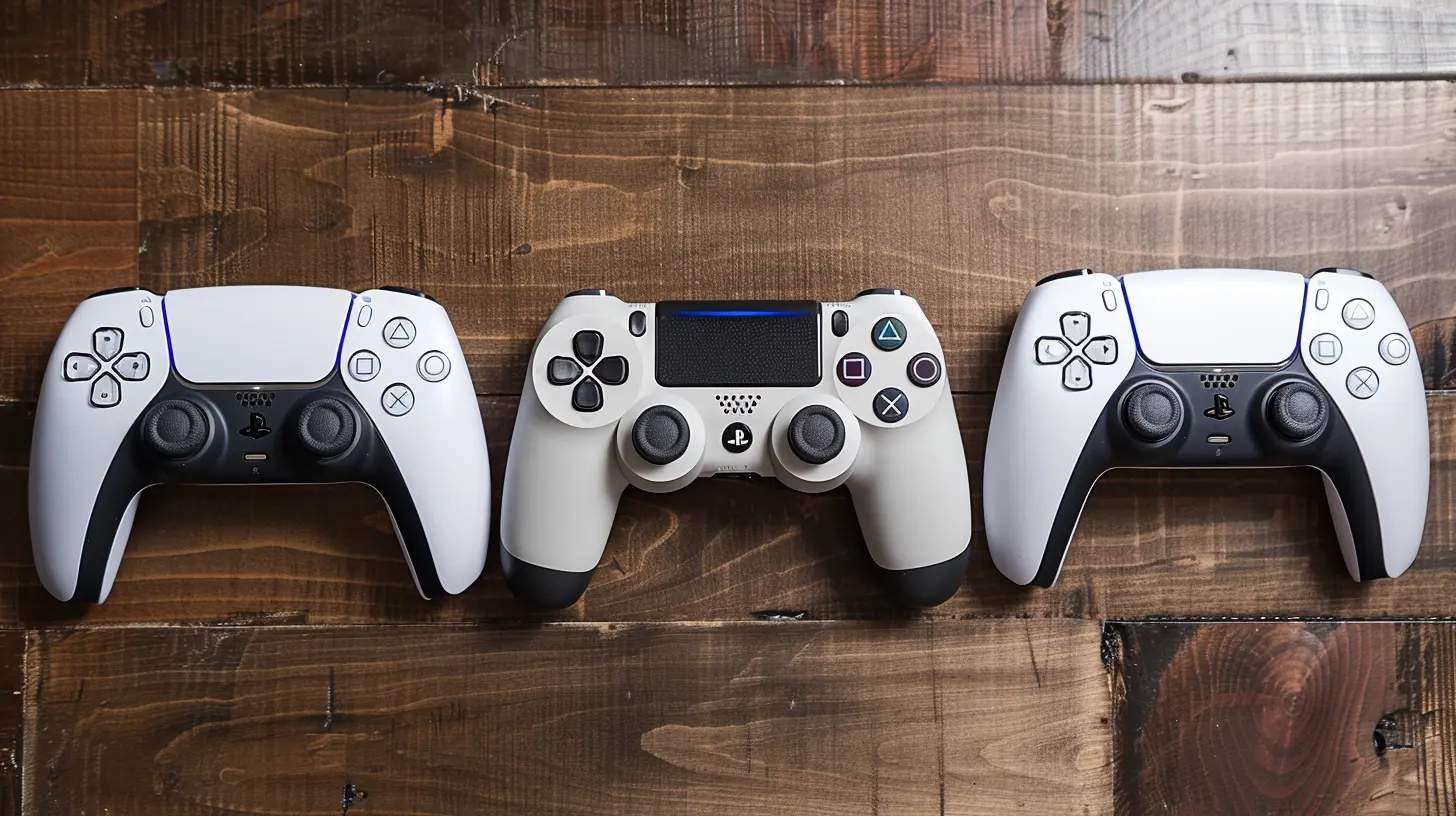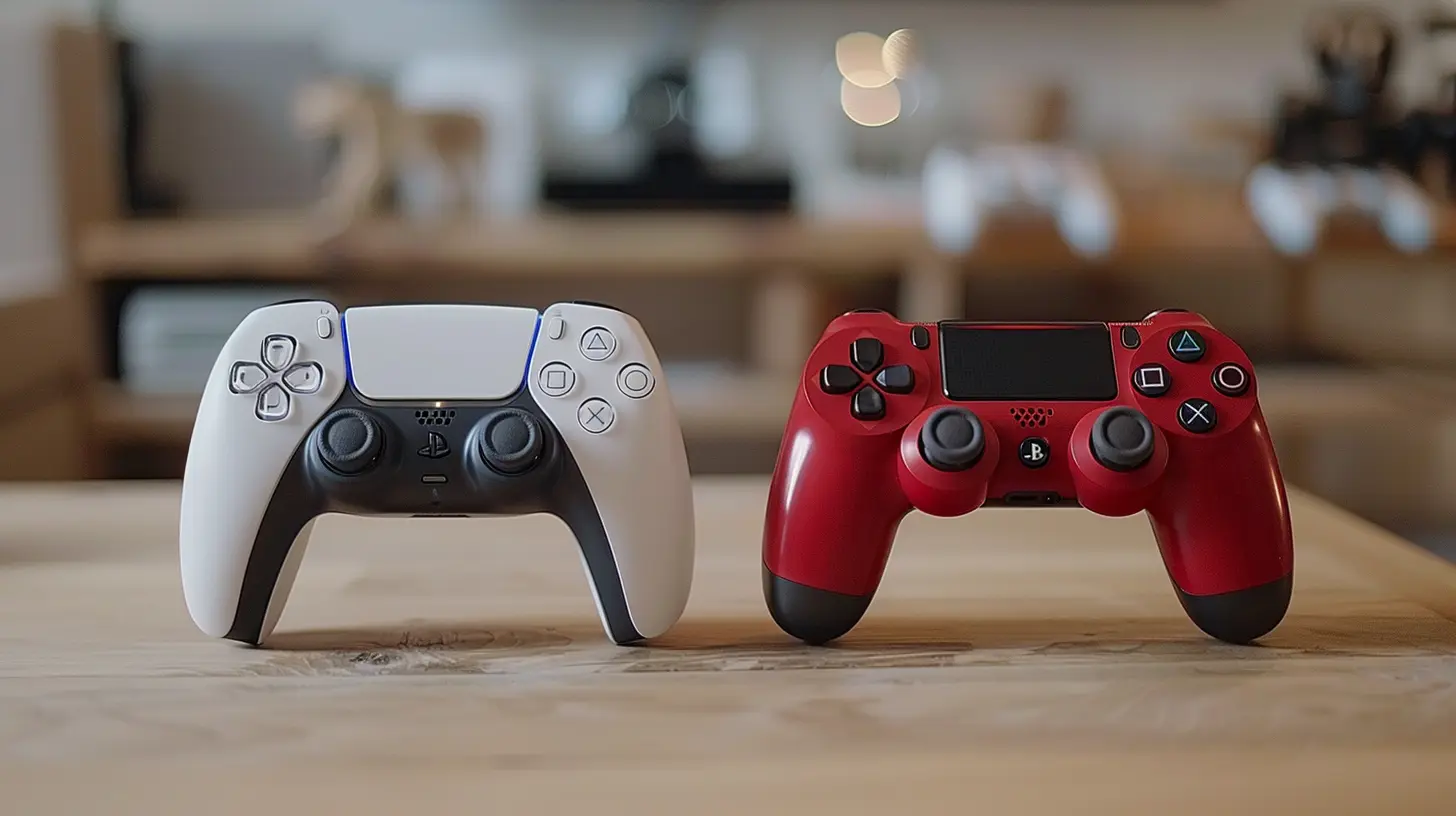From DualShock to DualSense: The Evolution of PlayStation Controllers
27 June 2025
Let’s take a stroll down memory lane, shall we? Whether you're a seasoned gamer who grew up smashing buttons on the original PlayStation or a newer fan who's just picked up the PS5, one thing's absolutely certain—PlayStation controllers have come a loooong way. From the humble beginnings of the original DualShock to the futuristic DualSense we know today, each iteration brought something new to the table.
Don't believe me? Sit tight, grab your favorite beverage, and let's unpack this epic evolution of gaming hardware—one joystick click at a time.
The Humble Beginnings: The OG PlayStation Controller
Before DualShock came into existence, Sony’s original PS1 controller (released in 1994) was as simple as it could get. No analog sticks. No rumble. Just a straight-up D-pad, four face buttons, shoulder buttons, and the iconic start/select duo.Think about it—it resembled a remote control mashed up with a spaceship. Functional, yes. Revolutionary? Not quite yet.
It was a decent start, but as 3D gaming started taking off, Sony knew it had to level up the control game.
DualShock 1: The Game-Changer
Boom! In 1997, the DualShock was born, and boy, what a turning point that was.What Made It Special?
- Analog sticks: Twin analog sticks gave players precise movement controls, especially crucial in 3D games like Metal Gear Solid or Gran Turismo.- Rumble feature: This. Was. HUGE. The controller could actually vibrate during gameplay. If you crashed your car or got shot? You felt it.
- Ergonomic design: It just felt right in your hands.
The DualShock wasn’t just a controller—it became a symbol of immersion. Suddenly, you weren’t just playing games, you were feeling them.
DualShock 2: Keeping the Momentum Going
Fast forward to 2000. The PlayStation 2 exploded onto the scene, and so did its controller: the DualShock 2.At first glance, it looked like its older brother. In fact, most folks couldn’t tell the difference. But oh man, it was so much more under the hood.
Key Upgrades:
- Pressure-sensitive buttons: Instead of just ON or OFF, buttons now had degrees of sensitivity. Hold it lightly and your character might tip-toe. Press harder and get ready to sprint.- Tighter analog control: Better precision meant better gameplay, especially in racing and action titles.
While it wasn’t flashy in outward design, DualShock 2 was beloved by PS2 fans and helped shape some of the best gaming experiences of the early 2000s.
DualShock 3: Wireless Waves and SIXAXIS Magic
By 2006, the PlayStation 3 introduced the next-gen experience, and with it came the DualShock 3.But wait... before that, remember the SIXAXIS controller? It launched with the PS3, minus the rumble feature. Yeah, gamers weren’t happy. Sony heard the cries and quickly course-corrected.
The Full Package Returns
- Wireless technology: FINALLY! No more tripping over wires or yanking consoles off shelves.- SIXAXIS motion control: You could tilt and move the controller to affect gameplay. Games like Heavenly Sword experimented with it, but it was a bit hit-or-miss.
- Rumble is back: After the backlash, the rumble feature made a triumphant return in the DualShock 3.
This controller was all about freedom. Wireless gaming with all the bells and whistles? Yes, please.
DualShock 4: A Bold Leap Forward
Now we’re talking. When the PS4 dropped in 2013, the DualShock 4 became a star in its own right.To this day, some gamers still prefer it over the DualSense. And honestly, it’s easy to see why.
What Set It Apart?
- Touchpad: Smack dab in the center, a clickable touchpad added innovative gameplay options.- Light bar: The colored light added flair and served gameplay functions (e.g., flashing red when hurt).
- Built-in speaker: Immersive audio effects added depth to firefights and subtle in-game cues.
- Share button: A game-changer for content creators. Screenshot your victories or stream live at the tap of a button.
It was bigger, curvier, and smarter. The DualShock 4 wasn’t just a controller—it was an interface between the gamer and the world on screen.
DualSense: The Future is Now
Finally, we arrive at the king of the hill—the DualSense.Launched alongside the PS5 in 2020, the DualSense didn’t just evolve the DualShock formula—it practically rewrote it.
This controller feels like something out of a sci-fi movie. It's packed with tech and personality, and it’s arguably one of the biggest reasons the PS5 experience feels so next-gen.
Features That Blew Us Away:
- Adaptive triggers: Ever try pulling a bowstring in Horizon Forbidden West? The resistance changes based on what you're doing. It's not just a gimmick—it’s immersive AF.- Haptic feedback: The vibrations are smarter now. Walking through sand, hitting metal, trudging through rain—each has a distinct sensation.
- USB-C charging: Faster and more reliable power delivery.
- Built-in mic: Quick chats with friends without a headset? Yes, please.
- Refined ergonomics: Slightly larger and heavier, with a futuristic look that fits like a glove.
The DualSense doesn’t just respond to your actions; it tells a story through feedback. It’s like the controller is alive.
A Quick Look: Evolution Timeline
| Controller | Release Year | Key Innovations ||----------------|--------------|--------------------------------------------|
| PS1 Controller | 1994 | Basic design, no analog or rumble |
| DualShock | 1997 | Analog sticks, rumble |
| DualShock 2 | 2000 | Pressure-sensitive buttons |
| DualShock 3 | 2006 | Wireless, motion control, rumble returns |
| DualShock 4 | 2013 | Touchpad, light bar, share button, speaker |
| DualSense | 2020 | Haptics, adaptive triggers, mic, USB-C |
So, What’s Next?
It’s wild to think about where we started and where we are now. And with things like cloud gaming, AI, and VR on the rise, there’s no telling what the next PlayStation controller will do.Will it scan our brain waves? Will it project holograms? Hey, who knows. But one thing’s crystal clear: Sony has never been afraid to push the envelope.
Why It Matters
Some folks might brush off controllers as “just peripherals,” but ask any gamer and they'll tell you… the controller is your connection to the game. It’s your sword, your steering wheel, your weapon of choice.Sony understands this better than most. Each design change—from the rumble of DualShock to the adaptive tech of DualSense—has reflected how we play, feel, and connect with games.
So yeah, it's not just plastic and buttons. It’s the heart of the experience.
Final Thoughts
From button mashing in Tekken 3 to feeling every footstep in Returnal, PlayStation controllers have evolved just as much as the games themselves. They're tactile time machines, each version loaded with memories, features, and the tech of their era.And as we look to the future, one thing's for sure: If history tells us anything, the next PlayStation controller is going to be something to behold.
So the next time you pick up your DualSense and feel the raindrops through haptic feedback, just remember—it all started with a simple, no-rumble hunk of plastic.
Here’s to the evolution, and here’s to what’s coming next. Game on, my friends.
all images in this post were generated using AI tools
Category:
PlaystationAuthor:

Tina Fisher
Discussion
rate this article
2 comments
Lira Marks
Great article! It's amazing to see how far PlayStation controllers have come. Each evolution adds new layers of immersion to our gaming experiences!
October 14, 2025 at 3:49 AM

Tina Fisher
Thank you! I'm glad you enjoyed the article and share the excitement about the evolution of PlayStation controllers!
Izaak Hall
Great overview! The evolution of PlayStation controllers showcases innovative design and enhances the gaming experience beautifully.
July 8, 2025 at 3:58 AM

Tina Fisher
Thank you! I'm glad you enjoyed the overview and appreciate the design advancements in PlayStation controllers.


